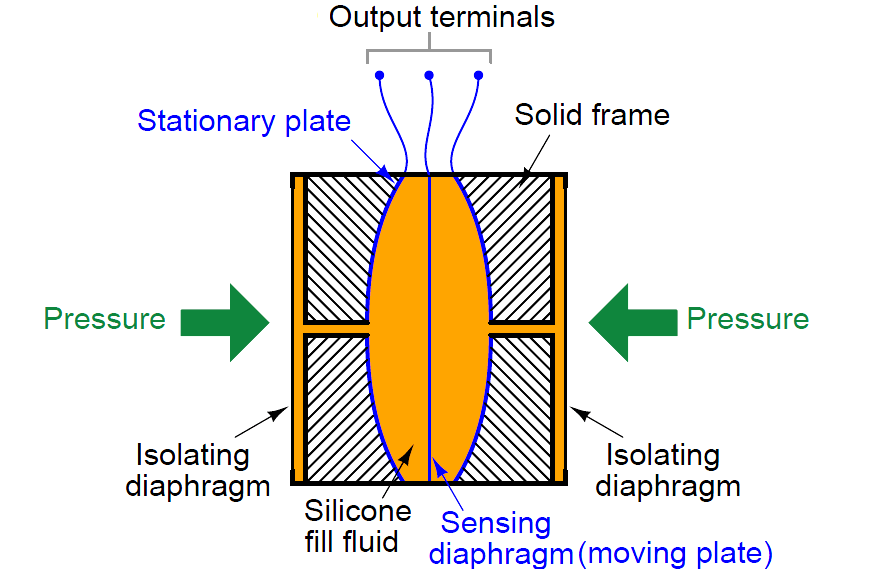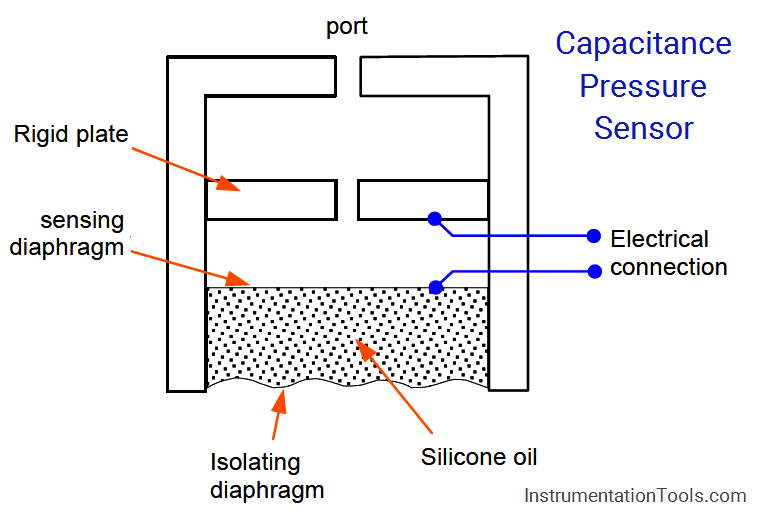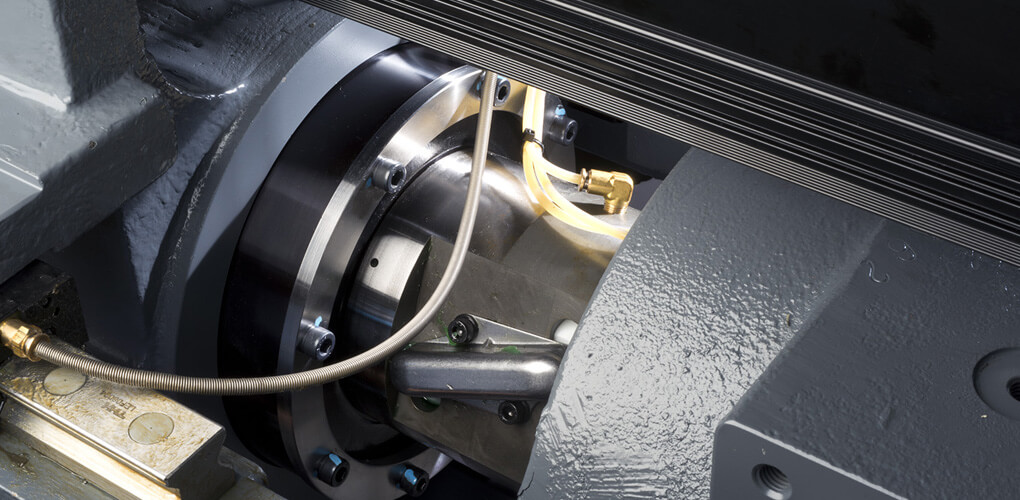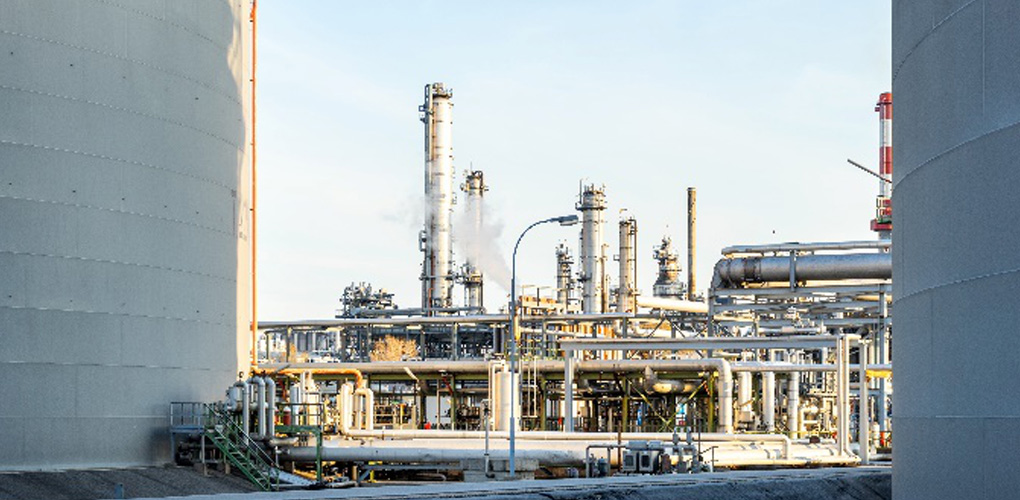What is Capacitive Pressure Transmitter?
Introduction to Capacitive Pressure Transmitter:
We use a capacitive pressure transmitter is a device to measure pressure.
The electronic components present behind the pressure transmitter are capable of converting the applied force of the sample upon the pressure sensor into an electrical signal.
Working Principle of Pressure Transmitter:

Figure 1Working Principal of Pressure Transmitter:
The working principle of the pressure transmitter is elementry. The pressure sensor converts the mechanical pressure value into a proportional electrical signal. The pressure sensor consists of two parts;
- Main body
- A thin Diagraph
Types of Capacitive Pressure Transmitter:
There are four main types of Capacitive pressure transmitter:
- Absolute Pressure Transmitters.
- Gauge Pressure Transmitters.
- Multivariable Pressure Transmitters.
- Differential Pressure Transmitters.
1. Absolute Pressure Transmitters:
They sense absolute pressure and get referenced to a full vacuum. The stress of the measured media is compared with the reference pressure of an absolute vacuum in a sealed reference chamber.
The absolute measure transmitter measures the pressures that are not influenced by atmospheric forces. You use them when you need high accuracy of pressure like, low-pressure measurement of vacuum distillations column.
2. Gauge Pressure Transmitters:
These transmitters sense gauge pressure and are referenced to atmospheric conditions, unlike absolute pressure transmitters.
The gauge pressure transmitters are exhausted to atmospheric pressures. You use such pressure transmitters in the process industries to measure liquid, gas, and steam.
3. Differential Pressure Transmitters:
As the name indicates, we use the differential-pressure transmitters to measure the difference between two pressures. Compare the low side pressure to the high side pressure.
You can use them for both flow and level applications;
Flow Applications:
To measure the difference between pressures on the upstream and downstream side of the pipe’s constriction (to compute flowrate), which is the primary element.
4. Multivariable Pressure Transmitters:
First introduced in 1992, these transmitters are used to measure two or more process variables.
Besides pressure and temperature, it is possible to use the multivariable pressure transmitters to measure volumetric flow and use these values to compute mass.
Mostly you use them to measure steam and gas flow measurement.
What Does a Capacitive Pressure Sensor do?
A capacitive pressure sensor efficiently uses the capacitor’s physiognomies and its electrical field to form a sensor.
They detect any change in the electric field, and the sensor can register any touch or proximity, displacements, and the detection of humidity and fluids.
How Does Capacitive Pressure Sensor Works?

Figure 2How does Capacitive Pressure Sensor works?
The Capacitive Pressure Sensor works according to a principle that, if a differential pressure deforms the sensing digraph between the two capacitor plates, an imbalance of capacitance will occur between itself and the two plates
The capacitance bridge circuit detects the imbalance and converts it to a D.C output current to 4 to 20 ma. The capacitive change is senses the movement of a flexible digraph relative to a fixed plate.
Moreover, another kind of capacitor uses concentric hollow metal cylinders just like flat-plate type, which is proportional to the area.
Similar pressure in isolating diagraphs and silicon oil fills the space between them. Furthermore, a net force proportional to the difference between two strains acts upon the metal sensing diagraphs. It deflects the metal sensing digraph to one side where the input pressure is more significant.
In case the two input pressures are the same the diagraph is positioned in the center leading to equal capacitances.
Use of Pressure Sensors
You can use pressure sensors in many devices, including automobile, medical, industrial, consumer and building. Any device that requires and depends on accurate and stable pressure measurements in order to operate reliably.
Advantages and Disadvantages of Capacitive Pressure Sensor:
In comparison to other pressure sensors, Capacitive pressure sensor offer several advantages.
- As there is no DC current through the sensor element, so the power consumption is meager.
- The current only flows when the device passes a signal through the circuit to measure the capacitance.
- On the other hand, passive sensors do not require a power supply as an external reader provides a signal to the circuit.
- Capacitive pressure sensors are not very sensitive to temperature changes.
- They can bear temporary over-pressured conditions.
What is the difference between two input capacitances?
The displacement of the sensing digraph shows the difference between the two inputs of two capacitances. This difference of capacitances and equivalent pressure signal is measures using a bridge circuit.
Difference between Inductive and Capacitive Sensors:
The inductive sensors oscillate until the target is present, whereas the capacitive sensors oscillate when the target is present.
How to Perform a Test?
The first thing you need to perform a test is;
- To connect the transmitter test hose from the calibrator to the transmitter.
- Then connect the ma measurement jacks of the calibrator to the transmitter.
- Now set the pressure/vacuum selection knob to the necessary function.
- Close the knob of the vent and supply the metering valve.
- Hold down the pump button and apply pressure or vacuum from the pump. When the device reaches the necessary pressure , release the controller.
- Use the fine pressure adjustment to correct the pressure.
- Use the display of the transmitter to read the reference and the current output.
- Repeat the same for all test points. If all the measured test points are within tolerance, the test is complete. Otherwise, adjust.
Factors that affect the accuracy of Pressure Sensor:
Temperature coefficients, Temperature Hysteresis, Pressure Hysteresis, and non-linearity are the significant characteristics that influence the sensor’s accuracy.
Additionally, if the accuracy is stated as a percentage of reading, then;
1% accuracy at 200 psi = +2psi error
100 psi = error would be +1psi
Whatever the reading is among 0-200 psi is expected to be within the +2 psi of the true pressure.
What to Choose between a Pressure Transducer or Pressure Transmitter?
The Pressure transducer is also a sensor with a voltage output directly proportional to a variation in pressure or other mediums. In comparison to transmitters, they have lower operating power and consumption.
Transducers are ideal to use in remote or OEM applications where the available power is a premium.
The only criteria to choose between pressure transducer or transmitter vary according to the needed output. The factors that determine selecting the right pressure instrument for an application are accuracy, range, working temperature, and the medium.
For output signal, you should take these points into account;
- Traditional mv outputs do not have temperature characterization.
- In comparison to a voltage signal, the current signal is more immune to interference and noise.
- A current signal has capacity to move farther.
- An analog signal is only a pressure reading.
- A digital signal enables the user to gather more information and other variables besides pressure.
- The input card of most of the control systems only accepts amplified signals.
Wrap up:
The capacitive pressure transmitter measures the expansive force of a liquid or gaseous sample, and its output is an analog electrical voltage or a current signal. There are four main types of pressure transmitters.
The capacitive sensors measure pressure by detecting changes in electrical capacitance caused by the movement of digraph. The general purpose of the transmitter is to transmit signals.
Choose between pressure transmitter and pressure transducer according to your desirable output to get accuracy and range.
For More Information, Contact Us Today!












